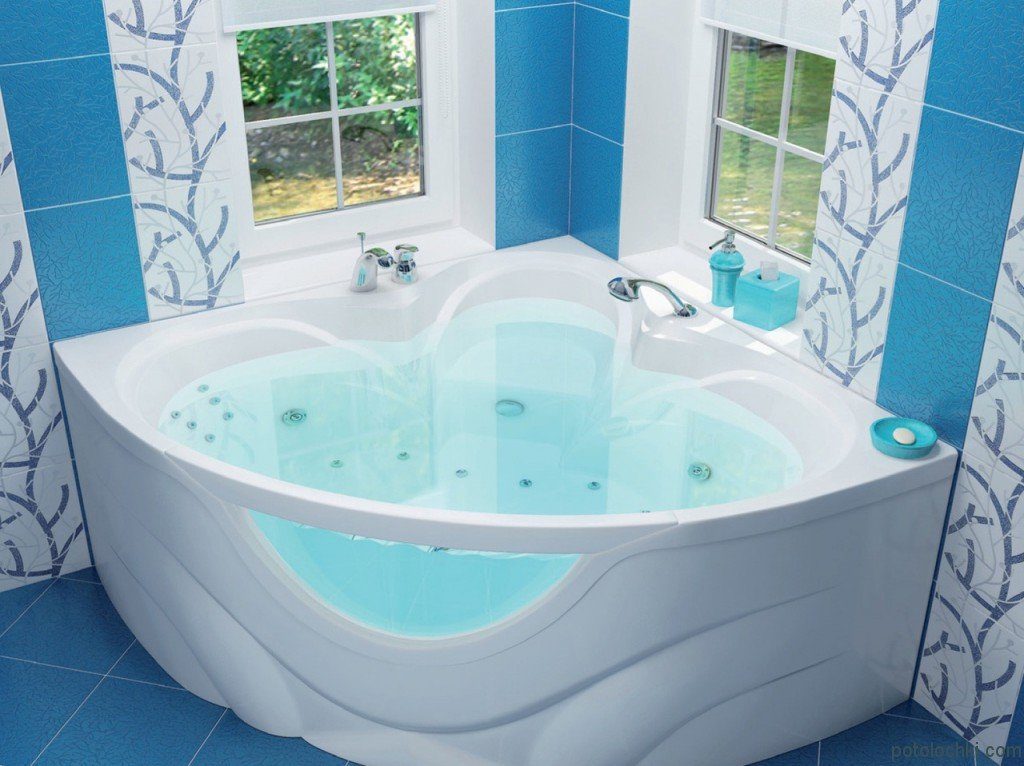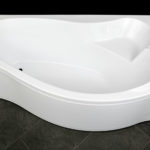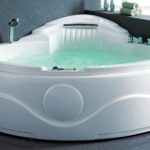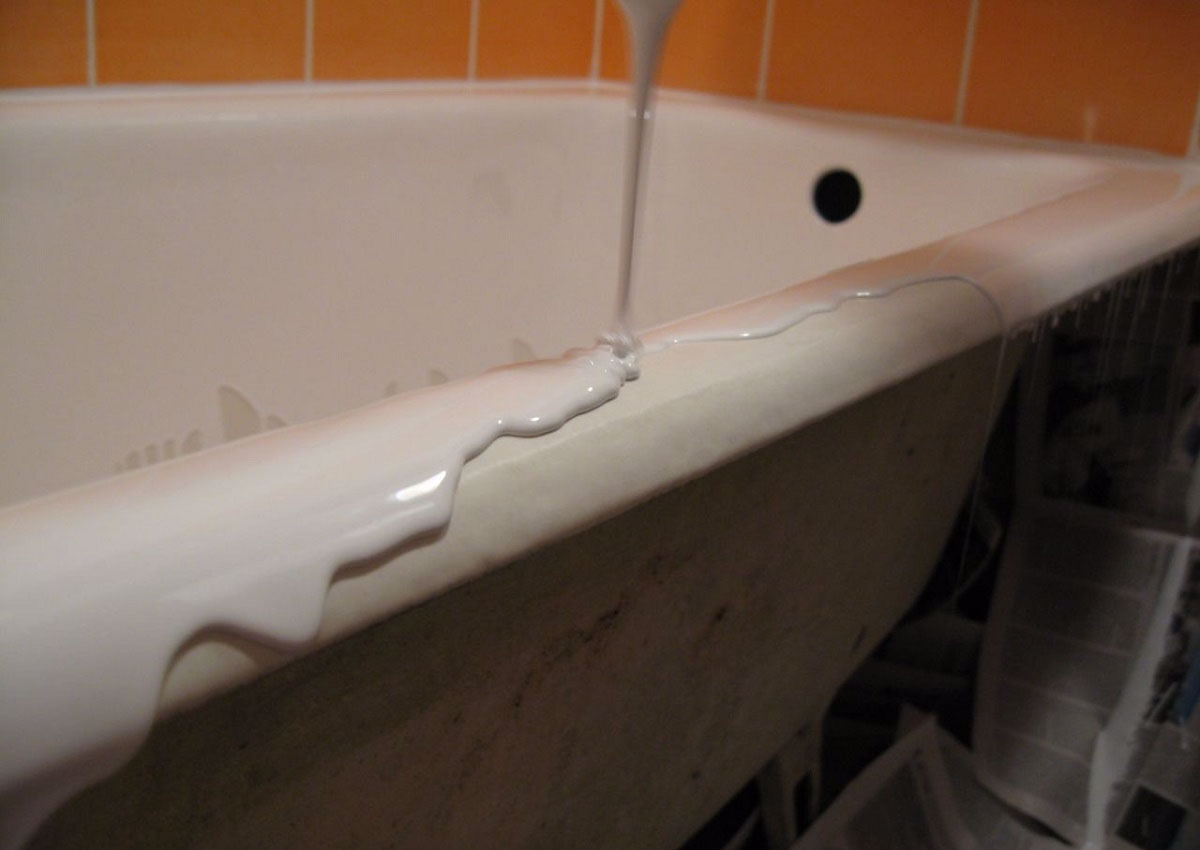Corner bath dimensions
Few people can boast of a spacious bathroom, because most often it is quite modest in size. This makes it difficult to install all the necessary appliances and plumbing fixtures. It can be especially difficult to place a bathtub, because the bulky structure takes up a significant part of the room.
But with the advent of new materials, choosing the appropriate plumbing option has become much easier. So, a corner bath will fit perfectly into a small room.
Due to their design and shape, such models take up little space, so they allow you to comfortably use the useful space of the bathroom.
The content of the article
Features, pros and cons of corner baths
The modern range of plumbing fixtures can sometimes surprise the average person. Every year, products with new designs and functions appear on the market. This allows you to choose a bath that will become the highlight of the room and fit equally well into any interior. Corner models look especially interesting and practical.
Many doubt that such plumbing fixtures will fit in a small bathroom. But manufacturers offer designs of different sizes to choose from. People who have already installed a similar model claim that it is easy to use and does not require special care.
Before purchasing any piece of furniture, you should first learn about the nuances of the product, its advantages and disadvantages.
Let's look at what features and advantages make such models popular:
- Comfort. The non-standard shape ensures convenient use. Despite its small dimensions, even a tall person will be comfortable in it - he can take a bath in a reclining position.
- Ergonomics. Thanks to its placement in the corner of the room, the plumbing fixtures do not clutter up the room and do not interfere with movement or use of other furnishings.
- Attractive appearance. The products have a modern, stylish design, making the room more aesthetically pleasing.
- Ability to set options. Shower stalls equipped with additional functions are especially popular. The design of corner tanks also allows them to be equipped with various functions. For example, you can install: LED lighting, shelves for placing bathroom accessories, hydromassage. It is worth keeping in mind that models with additional functions are more expensive. But buyers claim that they do not regret the money spent.
- Convenient accommodation. Products are available right- and left-handed. This allows you to choose an option for a room with any layout.

Like any other product, the corner bathtub also has a number of disadvantages:
- Price. The products are more expensive than baths of a standard design. If you want to equip your plumbing with options, you will have to prepare for serious financial costs.
- Material of manufacture. Most models are made of acrylic. The material is durable but soft. Therefore, the surface of plumbing fixtures cannot be cleaned with powders containing abrasive particles.
- Water consumption. When taking such a bath, more water is consumed.
- Design. A corner bathtub will not suit the classic style.
Corner baths made of different materials with photos
Several materials are used to make baths. Let's look at each of them.
Acrylic bath
Such baths are the most popular. This is explained by a number of advantages:
- The material is flexible, so it allows you to create a bath of any shape.
- Light weight - simplifies installation and transportation.
- Attractive appearance.
- Hygienic, environmentally friendly.
- No special detergents are required for care. It is enough to wipe the bath regularly with a cloth soaked in soapy water.

The disadvantages of acrylic structures include the fact that the surface cannot be maintained using cleaning powders - abrasive particles scratch the acrylic coating. This shortens the life of the product.
Steel
Steel baths are the second most popular. They have a low cost, so they are available in all plumbing stores. In addition, the plasticity of the material allows you to create products of any shape. But steel bathtubs have more disadvantages:
- Noisy. The water “rings” as it hits the walls of the bathhouse.
- Poorly maintains water temperature.
- Light weight. This may cause the product to tip over.
- Cannot be repaired.

Reference! To reduce noise when drawing water, foam should be applied to the outside of the bathhouse.
Cast iron
The most common option. It was from cast iron that bathtubs began to be made on an industrial scale. The products retain heat well, last for many years, and do not require special care. The disadvantages include the large weight of the product, which makes delivery and installation difficult.
Dimensions of corner baths
When talking about corner baths, many people mistakenly imagine a triangular structure that takes up all the free space in the room. But manufacturers produce models of various shapes and sizes.
Reservoirs are divided into two types: symmetrical and asymmetrical. Thus, the size of symmetrical products ranges from 1200x1300 to 1500x1500 mm. Asymmetrical dimensions: from 1000x900 to 1850x1050 mm. The depth of both options can be from 400 to 800 mm.
A wide selection of sizes allows you to choose a product for a room of any size.
Since plumbing is an expensive product and is purchased for more than one year, before choosing, you should take into account all the nuances, pros and cons. The presented range of baths can satisfy even the most demanding taste.





